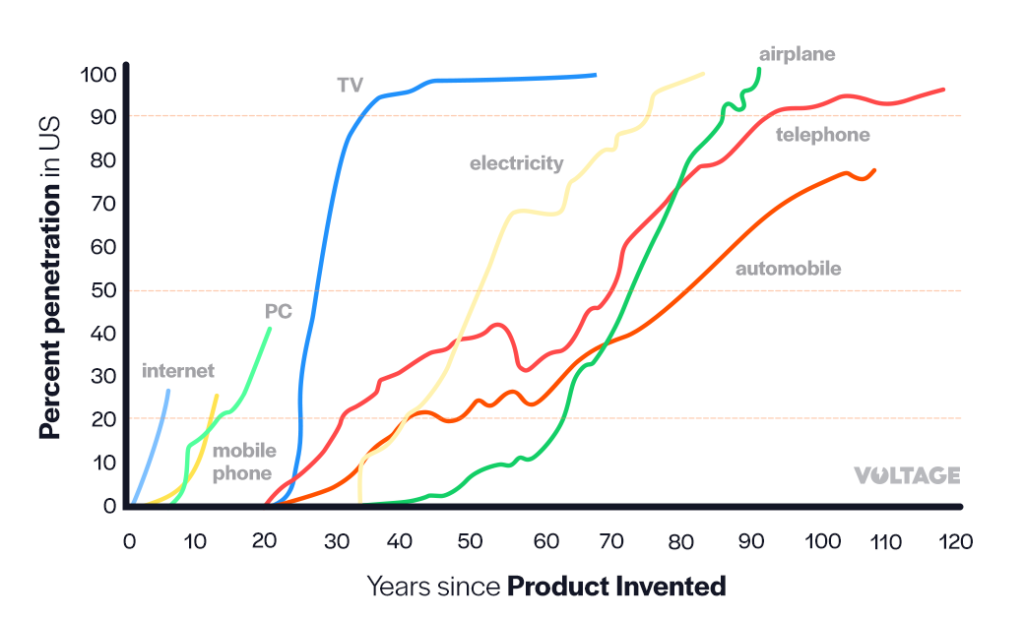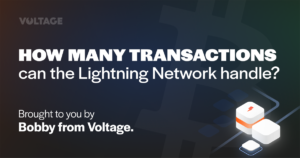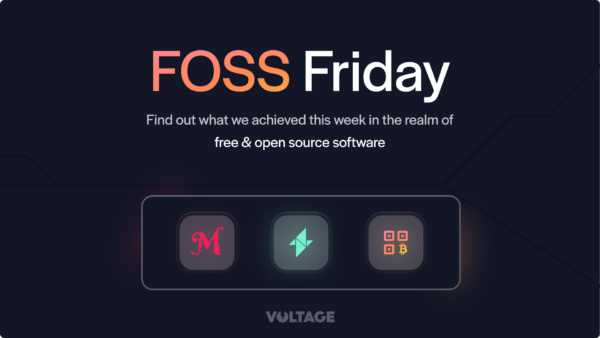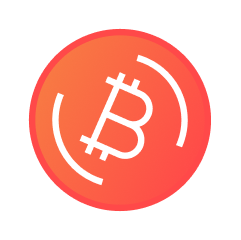I wanted to create a practical and easy-to-understand breakdown of how lightning can handle millions of transactions per second, how nodes connect to make this scale possible, and some recent examples of payment success growth over the last four years.
The Lightning Network is a peer-to-peer (P2P) payment system allowing anyone globally to participate. Unlike centralized payment networks, Lightning allows anyone to join and adds value and resiliency to the network functionality, enabling instant settlement payments.
How the Lightning network operates
The Lightning network operates similarly to Bitcoin and is made up of nodes. Lightning nodes are connected together by channels that allow payments to be executed.
Lightning payment channels are bidirectional. This means that both sides of the channel can send and receive payments to each other.
In the above scenario, this involves only two peers; the lightning network has tens of thousands of peers. The infinite scalability possibilities come from when more peers join the network and become connected with more liquidity. As long as there is a balance on the side of the channel a payment is coming from, there is a chance that payment can route through and be fulfilled.
While there will be new engineering problems that surface that need to be addressed as Lightning scales, new nodes, and liquidity are essential to scale to handle global payments infrastructure.
Lightning node connectivity example
In October of 2021, Arcane Research shared data breaking down how connected the Lightning Network was at that time by connecting a new node to one well-connected LNBIG.com node. This node had direct channels with 281 other nodes. (This is the equivalent of 2% of public nodes with channels)
If you started a new node in October of 2021 and connected to LNBIG.com-node, you could reach:
- 43% of nodes by two hops
- 93% of nodes by 3 hops
- 98.8% of nodes by 4 hops
- 99.9% of nodes after 5 hops
This example paints the picture of routing hubs’ role in the success of connectivity across the Lightning Network. By removing the top 10 nodes connectivity falls to around 85% connected.
The Lightning network can become a truly infinite scalable solution for payments when we see more nodes and bitcoin capacity added to the network. The gif shown above illustrates how Bob and Alice send payments back and forth with each other. At scale, the Lightning network would have millions of peers, all routing payments simultaneously.
The P2P nature of lightning enables payments to flow through the necessary peers to reach their destination. When millions of payments are flowing and multiple payments through the same channel in tandem, problems may arise, and engineering solutions will be in place to prioritize payments for the highest success rate.
Lightning network payment success example
In October of 2022, River released a Lightning Report, and on page 16 they disclosed their payment success rate in September of 2022 was 98.7%. River sends thousands of transactions a day, with an avg transaction size of 230k satoshis (~$46) and a median transaction size of 24.4k sats (~$5).
866 of the 1467 payments were unable to route due to timeouts, and 558 due to there being no route available at the moment. Other, less frequent causes of payments failing included node server outages (1 instance), erroneous payment information being provided (14 instances), or an inadequate amount being available because liquidity was lost between the time a node calculated a route and the payment was delivered (28 occurrences).
Data from 2018 showcases that $5 transactions were failing ~48% of the time.
Within four years we have seen massive improvements in the average transaction value and the success rate.
This truly begs the question to be asked. Can we expect Bitcoin and Lightning network to follow the adoption curves we have seen for other technologies?
Is the Lightning network being adopted?
The earlier insights I shared in this piece clearly prove the network is improving in connectivity and payment success.
The next step is continuing this growth but at a faster rate. Willy Woo posted a Bitcoin user growth chart in October 2022 which paints a picture of how growth can move gradually and then rapidly.
Here's time taken to grow Bitcoin's user base by a factor of 10.
— Willy Woo (@woonomic) October 26, 2022
We are in the 9th iteration; going from 100m to 1b users.
The 10th iteration will be last; 100% global adoption. pic.twitter.com/UU1JhOxwX0
This paints a picture of what we have seen repeatedly throughout history. Technologies start with a slow and steady adoption, and then a massive wave of growth happens from 1 million to 100 million. Time will tell how long it takes for Bitcoin to reach 1 billion users.
The illustration below shows that technologies created pre-internet took longer for mass adoption. The internet has introduced a faster capability for network effects to take place. (See the internet, mobile phone, and PC)

These newer innovations that require the internet have more rapid adoption curves. Bitcoin and the Lightning Network both benefit from this same innovation curve.
Interestingly, a Bitcoin or Lightning wallet can be created or downloaded on a mobile phone or a PC. This makes Bitcoin and Lightning networks accessible to 63% of the world as of October 2022. The data below shows we also add 170+ million new users to the internet yearly.
How many transactions can Lightning handle?
Theoretically, The lightning network can scale to do millions + of transactions per second. I see a few things that can be addressed to help enable this even more quickly.
What must be considered and solved to reduce failed payments can be extracted from River’s report shared earlier. While 98.7% were successful, 1.3% of failed payments were due to the following reasons.
- 59.03% – fail due to timeout
- 38.03% – fail due to no route available
If we want millions or near-infinite payments, we need to solve for timeouts and no available routes. (Remember, this is one of the top nodes in the entire network, while all nodes are not operating at this level, it paints a picture of what the lightning network can deliver in terms of successful payments when a node is managed well at these very early stages)
At Voltage, we are creating a solution, Surge, which helps node runners find these problems quickly to achieve higher reliability. Tools like Surge will help the Lightning Network achieve incredible reliability by empowering individual node runners with better data.

As new node operators come online in the future, they will have better data and tools to more quickly help reach a 99%+ payment success rate. With automation and machine learning tools, nodes can begin making better decisions on where and how to route payments.
The Takeaway
While the lightning network may not be processing infinite payments now, it can reach millions of transactions per second. With more connectivity, liquidity and tools that will enable better decision-making, we will likely see incredible throughput of payments.
As new engineering solutions like splicing, and tools like Surge should play a role to create better experiences reliability will increase. Naturally, new problems will arise, and they will be solved.
EDIT: 11/1/2022 (post publishing) – Just this morning an LND exploit went down. This is another example of how engineering problems must be solved along the way. While many exploits are done on test net, some will happen on mainnet, and solutions must be implemented when those problems arise.
We are still in Lightning’s infancy. May we continue to identify and improve the network experience as a whole.
If you have feedback or thoughts, please share them with me on Twitter at @ibobbyshell.
Begin building your Lightning solution on Voltage today!
Home





